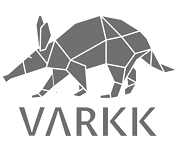|
Yaos posted:I have a VM running Windows 2008 in VMWare that says it is using 727.17 GB in the vSphere client. On the VM there's a C drive with 77.1 GB free out of 99.8 GB, and a D drive with 1.11 TB free out of 1.21. That's only about 130 GB of used space, where did the rest of the space go? There's no space reclamation. If that D: drive was ever more full and files were deleted, VMware doesn't know that and can't recover the space at the VMDK level. Would recommend making a new virtual disk for a new D: drive and copying files over within the guest, then deleting the old VMDK if the space is important to you.
|
|
|
|

|
| # ? May 10, 2024 06:25 |
|
I'm pretty sure that if you svMotion it to a thin provisioned disk and then back to thick (if you care) it will reclaim all that space in the process.
|
|
|
|
KS posted:There's no space reclamation. If that D: drive was ever more full and files were deleted, VMware doesn't know that and can't recover the space at the VMDK level. Would recommend making a new virtual disk for a new D: drive and copying files over within the guest, then deleting the old VMDK if the space is important to you. Some storage vendors support tools that run within the guest to reclaim space by looking at the block allocation table within the guest and zeroing out unused blocks then hole punching.
|
|
|
|
Number19 posted:I'm pretty sure that if you svMotion it to a thin provisioned disk and then back to thick (if you care) it will reclaim all that space in the process. Sorry for the double post, but sVmotion won't help. The blocks are marked as unused within the guest block table, but the hypervisor still considers them in use because it doesn't have access to the guest block map. They need to be zeroed to be reclaimed during a sVmotion and the guest won't zero them when it releases them.
|
|
|
|
NippleFloss posted:Some storage vendors support tools that run within the guest to reclaim space by looking at the block allocation table within the guest and zeroing out unused blocks then hole punching. You can do this from the host as well, if you have the right VAAI extensions http://kb.vmware.com/selfservice/microsites/search.do?language=en_US&cmd=displayKC&externalId=2014849 I've done it, once. It was pretty painless actually. Well, the actual SCSI UNMAP was painless, anyway. The part that sucked was when all my VMs on said datastore paused, because the array ran out of space even though the datastore still had over a terabyte of free space. Whoops!
|
|
|
|
Cidrick posted:You can do this from the host as well, if you have the right VAAI extensions This will reclaim blocks that VMFS has freed on a LUN but that have not been returned to the storage pool because the array does not know the blocks are no longer in use. But it still won't free up space released by the guest because VMFS doesn't know that those blocks are free (unless a guest aware tool tells it).
|
|
|
|
KS posted:There's no space reclamation. If that D: drive was ever more full and files were deleted, VMware doesn't know that and can't recover the space at the VMDK level. Would recommend making a new virtual disk for a new D: drive and copying files over within the guest, then deleting the old VMDK if the space is important to you. Thanks, now I know! Luckily the space belongs to a NAS dedicated to hosting user files so I'll just leave it be. Thanks for all the answers everybody. 
|
|
|
|
Is this normal VMware stuff that I really ought to know (as a VCP), or is it more storage stuff that I'd need to know if I was working on the EMCISA?
|
|
|
|
My 3 year long struggle to get VMware to honor my support contract and give me my license keys is finally over and I can get off of 4.1u1. vCenter is running on a crusty old 2008 vm, so my plan was to upgrade to 5.5 and once that gives me the ability to provision 2012 then build a new vCenter vm and migrate over to that. Documentation is talking about potential conflicts with porting the ADAM database out from different versions of the OS. Is that more of an issue with the major changes in ADAM from 2003 to 2008 and up, or is 2008 to 2012 going to be a problem as well? I haven't done much with delegating access in to our environment besides maybe a half-dozen folders where users have console access so if that's all I potentially lose its not a big deal to re-create. Should I do OS upgrades on the existing vm up to 2012 to save myself some headache before I switch over?
|
|
|
|
If a volume gets brimmed and cleared out, can't you storage vmotion it from one store to another to reclaim the space from deleted files? At that point its only going to drag around files actively identified by the filesystem, right?
|
|
|
|
NippleFloss posted:This will reclaim blocks that VMFS has freed on a LUN but that have not been returned to the storage pool because the array does not know the blocks are no longer in use. But it still won't free up space released by the guest because VMFS doesn't know that those blocks are free (unless a guest aware tool tells it). Ah, you're right, I mis-understood what the original requester was asking for.
|
|
|
|
BangersInMyKnickers posted:My 3 year long struggle to get VMware to honor my support contract and give me my license keys is finally over and I can get off of 4.1u1. vCenter is running on a crusty old 2008 vm, so my plan was to upgrade to 5.5 and once that gives me the ability to provision 2012 then build a new vCenter vm and migrate over to that. Documentation is talking about potential conflicts with porting the ADAM database out from different versions of the OS. Is that more of an issue with the major changes in ADAM from 2003 to 2008 and up, or is 2008 to 2012 going to be a problem as well? I haven't done much with delegating access in to our environment besides maybe a half-dozen folders where users have console access so if that's all I potentially lose its not a big deal to re-create. Should I do OS upgrades on the existing vm up to 2012 to save myself some headache before I switch over? For small environments where reconfiguring vCenter is a minor nuisance, I prefer to just spin up a vCenter Server appliance and manually move hosts over, then retire the original vCenter server. It takes much less time and effort than trying to upgrade vCenter itself. Upgrading the appliance itself is a couple of clicks, rather than trying to fumble through upgrading a la carte for a Windows install.
|
|
|
|
Dr. Arbitrary posted:Is this normal VMware stuff that I really ought to know (as a VCP), or is it more storage stuff that I'd need to know if I was working on the EMCISA? There is some stuff on the 5.5 VCP exam about thin provisioning and space utilization as viewed at the array versus datastore level, but it doesn't get terribly in depth. And there are no questions about VAAI primitives like LUN Unmap which is used by VMFS to provide free block information back to the array. So it's not something you need to know to pass the VCP, but it is good to know anyway since you need to understand how the multiple layers of storage virtualization interact so you can address capacity issues.
|
|
|
|
Japanese Dating Sim posted:The vmdk is still there... BIOS boot settings look right (I think)... I guess I'm just wondering if there's any stupid/quick things I should look at before having him rebuild it. Not really sure what to advise here. Just for curiosity's sake I would probably download some small Linux distro and boot it to see if it can see the NTFS partitions. If that's the case then I guess maybe the installation borked your OS somehow? Can't say I've ever run across a problem like this before.
|
|
|
|
NippleFloss posted:Sorry for the double post, but sVmotion won't help. The blocks are marked as unused within the guest block table, but the hypervisor still considers them in use because it doesn't have access to the guest block map. They need to be zeroed to be reclaimed during a sVmotion and the guest won't zero them when it releases them. Ah that's right. The one time I had to do something like this I used a tool to defrag and consolidate the data, zeroed out the rest of the disk and then svMotioned it to get it thin again. I can't even remember why I had to do that anymore but I'm sure I had a good reason
|
|
|
|
Number19 posted:Ah that's right. The one time I had to do something like this I used a tool to defrag and consolidate the data, zeroed out the rest of the disk and then svMotioned it to get it thin again. I'm not sure why but this is still a common thing for people to do, defrag their templates/golden images, then SvMotion them. I am not sure why people do this.
|
|
|
|
Dilbert As gently caress posted:I'm not sure why but this is still a common thing for people to do, defrag their templates/golden images, then SvMotion them. The defrag improves file layout in the guest to resequentialize it, but if it's a thin vmdk it will still be fragmented at the vmfs level so they svmotion it to sequentialize the vmdk layout. Of course most modern arrays will place blocks wherever they drat well please, especially when thin provisioning is used, so in most cases it has little affect on actual on disk layout and is just a waste of time.
|
|
|
|
BangersInMyKnickers posted:If a volume gets brimmed and cleared out, can't you storage vmotion it from one store to another to reclaim the space from deleted files? At that point its only going to drag around files actively identified by the filesystem, right?
|
|
|
|
NippleFloss posted:The defrag improves file layout in the guest to resequentialize it, but if it's a thin vmdk it will still be fragmented at the vmfs level so they svmotion it to sequentialize the vmdk layout.
|
|
|
|
Richard Noggin posted:For small environments where reconfiguring vCenter is a minor nuisance, I prefer to just spin up a vCenter Server appliance and manually move hosts over, then retire the original vCenter server. It takes much less time and effort than trying to upgrade vCenter itself. Upgrading the appliance itself is a couple of clicks, rather than trying to fumble through upgrading a la carte for a Windows install. We're small but we have a couple of things that need features the appliance can't provide. Since we're not big enough to justify running the appliance and then having roles running on other dedicated VMs I'm going to stick with a Windows-based vCenter for 5.5. Maybe 6 will change that as they add in more features to the appliance.
|
|
|
|
Ahh, so this does work. Finally virtualized everything I needed to for testing software compatibility. Curious, how often do you take snapshots and make backups of virtualized machines? What would be the things to consider when you're making such backup plan?
|
|
|
|
angus725 posted:Ahh, so this does work. Snapshots are not backups, they only create a delta and write changes to a file separate from the main virtual hard drive. A snapshot without the main disk is useless junk. For backing up workstation VM's, you can 7z them or just copy the VM folder to somewhere
|
|
|
|
Not 100% sure this is the right thread for this, but here goes nothing: Anybody here ever successfully get multiple Virtualbox VMs to communicate with each other in GNS3 *without* having to resort to using predefined UDP ports to "crossover" to another host? For grins, I recently tried to setup a sample topology in GNS3 that had a Netware 5 server (TCP/IP native, with IPX routing/conversion turned *off), an NT4 SP6a workstation as a client/nwadmin32 host, a simple ethernet switch connecting those to two 7200 routers (VRRP setup). The only way I've been able to successfully get the two computers to communicate was to set both to "UDP Tunneling" in Virtualbox, and have each talk directly to the others UDP port (127.0.0.1:20903 and 127.0.0.1:20904 in this setup), like they were directly crossed over into each other. I'd love to be able to use the NW5 server as a DNS/DHCP server, in addition to being the NDS root and login server, to multiple Win9x and NT4 stations. Any ideas on what I'm doing wrong, or have I run into a limitation of Virtualbox/GNS3? I'm aware that NW5 is ancient and unsupported, but it's still fun to tinker with this, without resorting to needing multiple physical machines. Hz so good fucked around with this message at 19:10 on Jul 22, 2014 |
|
|
|
angus725 posted:Ahh, so this does work. We don't use Snapshots for our Hyper-V VMs. For backing up we just use the Windows Server Backup tool built in to Server 2012. Seems to do the job without disrupting the VMs etc. Just have it backup the VMs daily to a removable drive or a simple backup scheme.
|
|
|
|
Varkk posted:We don't use Snapshots for our Hyper-V VMs. For backing up we just use the Windows Server Backup tool built in to Server 2012. Seems to do the job without disrupting the VMs etc. Just have it backup the VMs daily to a removable drive or a simple backup scheme. This has to be an incredibly tiny environment if that is viewed as a sufficient backup scheme. The ability to leverage snapshots is one of the great things about virtualization. If you aren't doing so then you're probably doing things less efficiently than you otherwise could. They aren't a complete backup solution, but they should be a part of most solutions.
|
|
|
|
How do Hyper-V snapshots work? I've never used it and assumed it was just like vSphere where the snapshots are useless for anything other than testing something and being able to roll back if it breaks everything.
|
|
|
|
NippleFloss posted:This has to be an incredibly tiny environment if that is viewed as a sufficient backup scheme. It is, single Hyper-V host, a couple of Server VMs and some occasional other VMs for testing. Probably similar to what is used in the post I was replying to where he was using it for software testing purposes.
|
|
|
|
thebigcow posted:How do Hyper-V snapshots work? I've never used it and assumed it was just like vSphere where the snapshots are useless for anything other than testing something and being able to roll back if it breaks everything. They work basically the same, only IIRC hyper-V has some of the built in plugins install in it's tools for VSS on exchange and SQL servers to quiesce the filesystem and DBS.
|
|
|
|
Anyone here do a sole NSX deploy? Thinking of doing it because I am tired of dealing with the network team and their turn around time.
|
|
|
|
Dilbert As gently caress posted:They work basically the same, only IIRC hyper-V has some of the built in plugins install in it's tools for VSS on exchange and SQL servers to quiesce the filesystem and DBS. Does anyone have any real experience with this? We have some challenges with VMware that, due to the way its snapshotting works, we can't make consistent snapshot as many times as we'd like because of the VM stuns when it starts replaying the redo file into the VM after a snapshot. I read that HyperV works differently and does not have this problem but I haven't found anything conclusive.
|
|
|
|
Mr Shiny Pants posted:Does anyone have any real experience with this? We have some challenges with VMware that, due to the way its snapshotting works, we can't make consistent snapshot as many times as we'd like because of the VM stuns when it starts replaying the redo file into the VM after a snapshot. Worked with hyper-v for 2 years, and haven't for 10 months. Sorry you can easily copy the VM.
|
|
|
|
Dilbert As gently caress posted:Anyone here do a sole NSX deploy? Thinking of doing it because I am tired of dealing with the network team and their turn around time. Define "sole NSX deploy" ? I've deployed it, it's pretty simple to get up and running but you can build some pretty sophisticated network topologies with it. Make sure the network supports an MTU of 1600 bytes at a minimum and I recommend using L3 links between switches with something like OSPF to deal with path failures/network convergence. Happy to answer any specific questions.
|
|
|
|
1000101 posted:Define "sole NSX deploy" ? Deployed it in a small lab before(125 VDI +600 Servers) but eh lost interest until now. One person who congregates NET and VM traffic by linking about 40+ sites with the expansion to 80+ in the next 6 months. Honestly it seems fun a poo poo and I am eager to learn it. Network is behind it, Systems is pulling me back because I am "too attractive to vendors". I am told this is the #1 reason aside from my age I don't push the BS back. Basically I want to know what is the largest network you supplied and how did it help; average site 500 users. I'd love to talk out faults and improvements vendors miss but for some reason "it's strange to correct third parties" even though they miss basic poo poo. Which pisses me off and drives me to VCDX for some reason. Dilbert As FUCK fucked around with this message at 07:00 on Jul 23, 2014 |
|
|
|
Don't use VXLAN as an inter-datacenter transport, that's not what it's for. If you need to have a VLAN "stretch" over multiple sites then use something like OTV but that honestly creates more headaches than it solves in practicality. About the best use case we've found to support stretched VLANs is a datacenter migration that spans over several months of time before it's finished. That said it works well in environments where you have a lot of transient workloads like service providers and software development labs. You can create N tier applications with all your usual networks and devices (i.e. web network with a load balancer/reverse proxy-->firewall-->app network-->firewall-->database network) then instantiate them as many times as you need to or tear them down because who cares. This is helpful particularly for one of my customers who does mail security products. They need to support a couple different versions of Exchange with a couple different versions of outlook and similar environments for Lotus Notes. They'll have what amounts to an Exchange 2010 vApp with appropriate clients and AD servers that they can instantiate as many times as needed. I have another customer that just wants to replicate their production environment as closely as possible. This was pretty trivial for them with things like Juniper's vSRX, F5 VE and a shitload of NSX overlay networks. It's also pretty trivial to make carbon copies of these networks and the eventual goal is actually to start using NSX in prod and just promote an environment. Service providers love it because it allows the end customer to build whatever network topology you want without them having to get involved beyond giving you some "front end" or public IP addresses to get traffic into and out of your environment. We're planning to use it for a training lab we're rolling out. Customers will come in via a virtual desktop/RDP session into a walled garden that has access to the things they need. Even if 4 people are attending a workshop everyone's going to get their own copy of the environment. Things I like about NSX off the top of my head: Distributed routers. This is pretty cool. Each hypervisor can act as the default gateway between VXLAN segments. This means if you happen to have 2 servers in separate VXLAN segments that need to talk to each other, the traffic flow can be routed entirely in memory on the hypervisor. The NSX control plane. Keeps MAC to VTEP bindings (like a CAM table on a physical switch) so all of the virtual switches know ahead of time where they should forward things. Also means you don't need to setup PIM if your VXLAN tunnels are going over multiple subnets. Lets you design a network for proper resiliency instead of depending on things like STP or kludgey datacenter fabric technologies (VXLAN can make things like SPB, TRILL and FabricPath no longer relevant). Nothing scales better than an IP fabric. Network and security folk can appreciate both the hypervisor firewall as well as the edge gateway firewall. The edge gateways also support OSPF, BGP, NAT, basic load balancing, IPSec VPN and SSL VPN.
|
|
|
|
Hz so good posted:Netware 5 server  WHY?! WHY?!As someone with physical Netware 6.0 and 6.5 SP8 servers in production, I am not sure why you would do this.
|
|
|
|
angus725 posted:Ahh, so this does work. Are you deploying to VMware? If you're using hyper-v, win 8.1 pro has a client hyper-v feature which has most of the server hyper-v features except for I think live migration.
|
|
|
|
mayodreams posted:
I was a CNE 4.x/5.x waaaaaay back in the day, and haven't touched it in about 13 years. It's more for nostalgia than anything else.  /This is all for a home lab, btw.
|
|
|
|
Malcolm XML posted:Are you deploying to VMware? If you're using hyper-v, win 8.1 pro has a client hyper-v feature which has most of the server hyper-v features except for I think live migration. We'll be deploying HyperV as our main hypervisor. Bought a windows 8 pro laptop from Lenovo a few days ago to take advantage of the windows server management software.
|
|
|
|
VMware question: is there any way to get/refresh SDRS recommendations for datastore clusters via PowerCLI in vCenter 5.1u1?
|
|
|
|

|
| # ? May 10, 2024 06:25 |
|
VMware 5.0 U3: Can you not convert a virtual RDM to a VMDK during a storage vMotion to a different LUN? I thought you could change the storage format, ie. to a thick provision, during a vMotion but we're getting a "general system error: no such device" when trying this.
|
|
|































